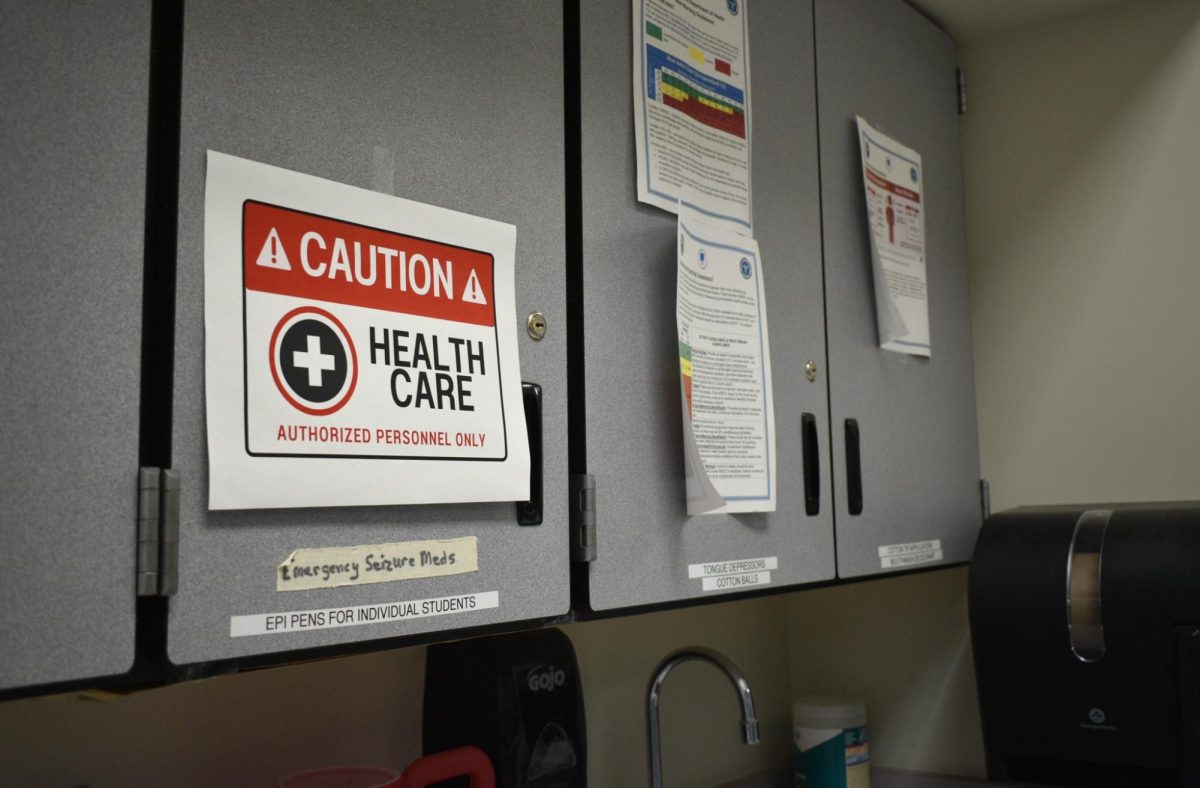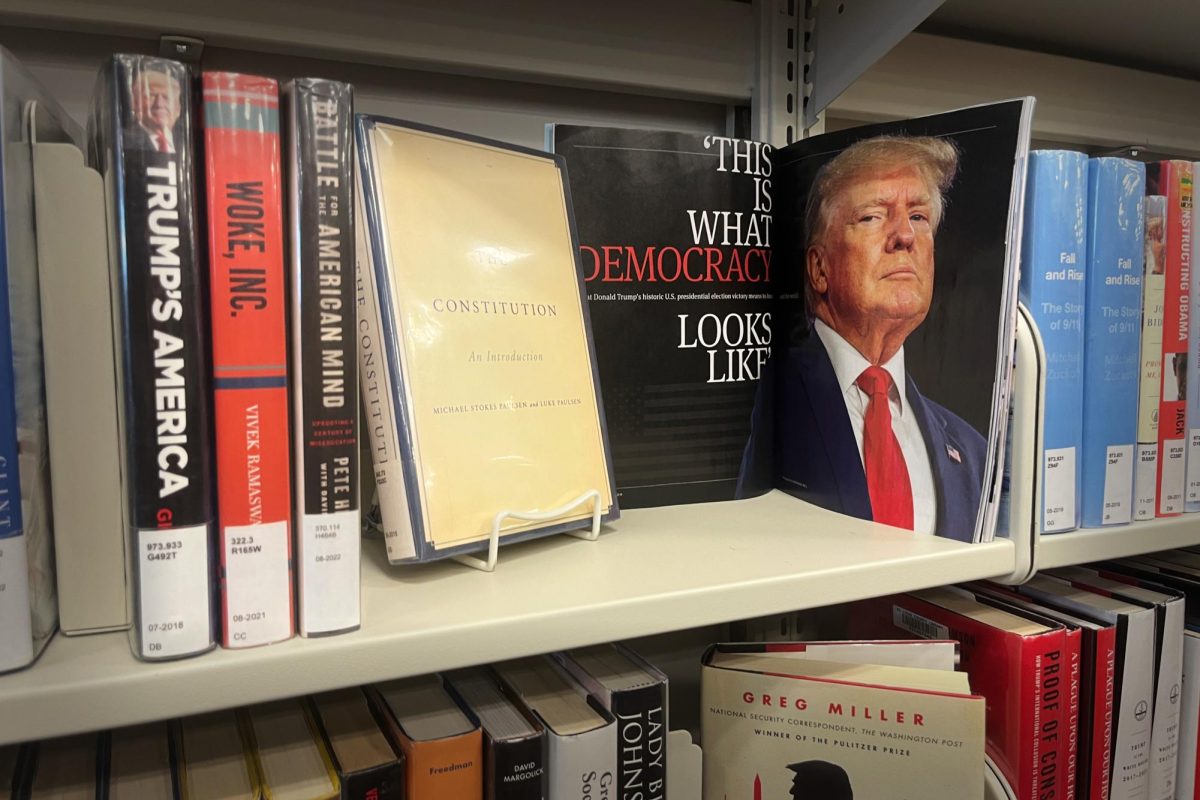
PRO LEGALIZATION: A new generation has begun its reign on politics, and it seems as though an overhaul of changes to the entire government is near. Policies and Ideologies of the past must be re-examined and re-structured before the United States collapses on itself. It is now time to end the War on Drugs, and begin the legalization, sale, regulation and taxation of marijuana.
Before I go any further, it must be understood that I do not in any way condone the use of drugs or alcohol.
Let’s go back to a very similar point in history, the year 1920, when the passage of the 18th amendment marked the beginning of the prohibition of alcohol. While the intentions of prohibition were meant to make the country safer, it actually infested cities with crime and violence while also endangering the public.
Between 1920 and 1921, the average crime rate of 30 major U.S. cities had risen 30%, contributing to that was the homicide rate, which rose 12.7%. Subsequently, the average cost to run a police department rose 11.4%.
These numbers mark the beginning of the illegal distribution of alcohol by the American Mafia, an Italian-American criminal society. Even with prohibition in effect, there was still a very high public demand for alcohol. Because of this demand, the Mafia was provided an atmosphere that tolerated crime as a means to supply liqueur to the general population.
The profits behind this illegal alcohol industry were so prosperous that getting in the business was worth the risk of punishment from the government. Masses of poor Italian immigrants joined the mafia, seeing it as a career. Bootlegging alcohol exceeded the profits of all other mafia-related crimes, making it their primary concern.
As the Mafia grew, it became divided. Other groups started bootlegging, which led to competition. Competition in an illegal industry only leads to one thing: violence. Groups waged urban wars with one another and many lives were lost over cheap, poor quality alcohol.
Crime rates only continued to rise, and the only option left for the government was to end prohibition in 1933. State governments were then allowed to set their own rules and regulations regarding alcohol. The black market for alcohol that the mafia had been controlling died out quickly since the legal alcohol was no longer monopolized and the product was at a safer, better quality.
The alcohol industry re-established itself, alcohol-producing cities like St. Louis opened up thousands of jobs and helped the already hurting economy. Murder and crime rates declined substantially, and the federal government no longer had to fund the Bureau of Prohibition, which drained millions of dollars from the budget.
Since then, thousands of laws regarding the safe consumption of alcohol have been established. The dangerous effects of alcohol are a widespread knowledge that is embedded into our brains from a young age. Overall, the legalization of alcohol has made the country a safer place.
In the modern era, we see a situation that is almost identical. Street gangs recruit poverty-stricken kids of the ghettos and introduce them into the easy money and violence of the drug game, all while normal, everyday people do business with them. Legalization of marijuana would do just what the elimination of prohibition did: eliminate the black market for drugs. If people could get drugs from a legal distributor, it would not only be safer, but it would be of a better quality.
Without any consumers, there wouldn’t be much of a need for a black market for drugs, and without a black market for drugs, there would be an inevitable decrease in gang violence, and the war on drugs would finally be over. Over time, the amount of people joining violence-oriented gangs would diminish, countless amounts of prisoners serving time for possession would be released, and a new source of income would emerge for the economy.
While the question of the safety of marijuana has been a heated debate over the last 20 or so years, when compared to other legal substances such as tobacco or alcohol, marijuana is less of a danger to human health.
A study done in January of 2012 by a plethora of doctors on the Journal of the American Medical Association (JAMA) about the association between marijuana exposure and pulmonary function over 20 years proves this. The studies had strong statistical evidence taken from 5115 men and women across 4 U.S. cities that showed that the Force Vital Capacity, or the maximum amount a person could exhale form the lungs after maximum inhalation (FVC), actually increased exponentially for marijuana smokers until peaking at 20 episodes a month with an added 50 ml of lung capacity for current smoking behavior. With tobacco, the FVC goes exponentially down.
However, another variable the study showed statistics for was the Force expiratory volume in 1 second, or the maximum amount of air that can be exhaled in 1 second, or the FEV1. These studies showed that in marijuana smokers, the change in FEV1 increased until a little over 15 episodes per month with an added 40 ml to FEV1, until dropping below the average pulmonary function for a non-smoker at 25 episodes per month. With tobacco smokers, the FEV1 only declined in a linear pattern.
Over a lifetime, the amount of marijuana consumed is measured in joint-years, which are equivalent to 365 ‘joints’ or pipes of marijuana. The amount of tobacco consumed is measured in pack years, which are equivalent to 365 packs of cigarettes per year. Interestingly enough, the FVC for marijuana smokers linearly inclined, without losing any lung capacity as the amount of joint years increased. The study on tobacco consumers showed a linear decline in lung capacity as the amount of pack years was increased. The FEV1 for lifetime marijuana smokers did have an eventual linear decline, but it didn’t go below average until about 30 joint years, which is equivalent to 10950 ‘Joints’. In conclusion of these studies, occasional and low cumulative marijuana use was not associated with adverse effects on pulmonary function.
Inhaling smoke is just bad for the body in general. Its been proven to cause deadly diseases and complications, and it should not be done at all. Even with all of the widespread knowledge of the terrible consequences of smoking, tobacco companies still make millions of dollars every day. If marijuana is outlawed for reasons based on health, then tobacco should be even more illegal. Alcohol too, which accounts for millions of deaths worldwide, should be illegal based on those reasons, but its not, and it doesn’t make any sense. Easily put, Prohibition doesn’t work.
Marijuana being illegal is exactly what makes it dangerous; it’s exactly what makes it a ‘gateway drug’. By now, it should be easy to see that if someone wants drugs, they’re going to get them regardless of what the law says. Providing a safe, government regulated environment where it could be sold would not only be beneficial financially, but it would bring people to do business in safe, legal distributor who wouldn’t introduce them to opportunities to get harder, more dangerous drugs.
By: John Watson
SAY NOPE TO DOPE
Since the beginning of the debate of the legalization of marijuana, this is the first time that the legalization has gained a nationwide majority. However, smoked marijuana has not withstood the rigors of science. It is not medicine, it is not safe and it should not be legalized in any form.
It needs to be understood that marijuana is not a medicine and is only used to ease the suffrage of the terminally ill. Instead of prescribing medicinal marijuana, doctors should be prescribing antiemetic and analgesic therapies. Seventeen states have legalized the use of medicinal marijuana solely for the purpose of the terminally ill. Due to some of the treatments of cancer and HIV/AIDS, patients are left feeling nauseous and have a lost appetite. Marijuana helps relieve those feelings for said patients. However, marijuana is known as being a general immunosuppressant, meaning that it weakens the immune system. A weakened immune system increases your chance for infections and disease.
As science would explain, if a patient of said diseases used marijuana as a therapeutic procedure, they are damaging their immune system as well, which in turn makes immune system more prone to disease and infection, aren’t they ultimately making their disease worse in the long run? Medicinal marijuana is putting these patients into a vicious circle. There are better, less dangerous medicines that offer the same relief as opposed to marijuana.
The use of recreational marijuana also carries dangers in itself as well. The Office of National Drug Control reports that smoked marijuana damages the brain, heart and lungs. It impairs learning and interferes with memory, perception and judgment.
The Medicinal Cannabis Journal conducted a study that found marijuana smoke contained more that 50% of the exact same carcinogens as tobacco. It is said that there is no significant link to marijuana and the risk of cancer. However, there are not many studies to support this evidence. Because marijuana is illegal in so many countries, people are reluctant to take part in the research and even if they take part, they may not admit how much they actually smoke.
Unlike nicotine, there is no scant evidence that marijuana carries any real risk of becoming chemically addicted. However, Dr. Alan Budney of the University of Arkansas Center on Addiction Research, reports that people who use develop a psychological dependence where they find themselves craving marijuana, a decreased appetite and sleep difficulty.
According to the National Center on Addiction and Substance Abuse, children as young as 12 are starting the use of marijuana. The inpatient and outpatient treatment of marijuana dependence has jumped 142% since 1992.
By characterizing marijuana in the medical field, teen use of the drug has been continuously increasing. Andrea Brthwell, former White House director of National Drug Control said that children who have entered drug abuse treatments have routinely reported that they heard “pot is medicine,” and therefore it is okay to use. Starting these drugs at an early age makes children more reluctant to try more extreme drugs as they get older, such as cocaine or heroin.
Colorado’s Amendment 64 in their constitution has legalized the recreational use of marijuana. Their legislation states that users have to be 21 in order to smoke it legally. According to the National Center on Addiction and Substance Abuse, the average age to smoke marijuana is 17, which allows for underage crime rates to still be an important factor to consider.
The legalization of marijuana means the regulation of it as well. The regulation of it will mean that the government will set an official potency of the drug, meaning that marijuana everywhere will have to be the same. The average marijuana potency in California 10-20%, 20-30% in Canada and 2-3% in Mexico. Furthermore, the taxation of the drug will have to be set as well. When debates of the legalization of marijuana reached California, the California State Board of Equalization projected that they would receive $1.4 million in tax revenue from retail sale of marijuana. When the election of 2010 came around, after research and development, they changed their minds and concluded that the intended projections were incorrect, that the retail sales would be considerably less that what they estimated, making the decision of legalizing the drug a resounding no.
Marijuana is known as the “gateway drug.” If we were to legalize the gateway drug, we would be going against the values we’ve been taught our entire lives, and introducing people to much worse drugs. What kind of message would we be sending to the rest of the world? To our generation? Or to our kids?
The legalization of marijuana is the last resort for Americans, and quite frankly, I do not think America is that desperate.
By: Susie Watson
Disclaimer: The views and opinions expressed in this article are those of the authors and do not necessarily reflect the official position of the Parkway School District.

![Leaning on the podium, superintendent Melissa Schneider speaks to Parkway journalism students during a press conference. Schneider joined Parkway in July after working in the Thompson School District in Colorado. “My plan [to bond with students] is to get things on my calendar as much as possible. For example, being in [classes] is very special to me. I am trying to be opportunistic [meeting] kids [and] being in [the school] buildings. I have all the sports schedules and the fine arts schedules on my calendar, so that when I'm available, I can get to them,” Schneider said.](https://pwestpathfinder.com/wp-content/uploads/2025/09/IMG_5425-1200x943.jpeg)


![Red, white and blue, the American flag holds the values of our democracy. The fight that we once endured has returned, as student journalists and senior correspondents across the country are losing their voices due to government control. “[Are] the White House and [the] government limiting free speech [and] freedom of the press? Yes [they are],” chief communications officer of the Parkway School District and former journalist Elisa Tomich said.](https://pwestpathfinder.com/wp-content/uploads/2025/03/Untitled-design-14.jpg)
![A board in the Parkway West counseling department displays pennants of selective universities. With a wide range of students interested in attending, it’s important that these schools have clear priorities when deciding who to admit. “[Washington University] had the major that I wanted, psychology, philosophy, neuroscience. That's a holistic study of the brain, and [WashU is] the only college in the world that offers that. That's the main reason I wanted to go; I got into that program,” senior Dima Layth said.](https://pwestpathfinder.com/wp-content/uploads/2025/02/Flag-1.png)

![Within the U.S., the busiest shopping period of the year is Cyber Week, the time from Thanksgiving through Black Friday and Cyber Monday. This year, shoppers spent $13.3 billion on Cyber Monday, which is a 7.3% year-over-year increase from 2023. “When I was younger, I would always be out with my mom getting Christmas gifts or just shopping in general. Now, as she has gotten older, I've noticed [that almost] every day, I'll open the front door and there's three packages that my mom has ordered. Part of that is she just doesn't always have the time to go to a store for 30 minutes to an hour, but the other part is when she gets bored, she has easy access to [shopping],” junior Grace Garetson said.](https://pwestpathfinder.com/wp-content/uploads/2024/12/DSC_0249.JPG-1200x801.jpg)

![Senior Sally Peters stands in the history hallway, contemplating her choices in the 2024 United States and Missouri elections on Nov. 5. As a member of Diplomacy Club, Peters has discussed key candidates and issues in contemporary American politics. “[As students], we're starting to become adults. We're realizing how much the policies that are enforced and the laws that make it through the House and Senate are starting to affect us. [Opportunities such as] AP [U.S.Government] and Diplomacy Club [make elections feel] a lot more real,” Diplomacy Club vice president and senior Nidhisha Pejathaya said.](https://pwestpathfinder.com/wp-content/uploads/2024/10/Flag-1-1.png)
![Mounting school pressure can leave many students overworked and overstressed. Schools must give students the necessary resources to help assuage student mental health issues and prevent the development of serious crises. “The biggest thing [schools] can do [to protect student mental health] is offer more time [to do work], like a study hall, or offer more support from teachers so that students don't feel stressed out and can get help in areas that they need,” senior Bhavya Gupta said.](https://pwestpathfinder.com/wp-content/uploads/2024/09/unnamed-4.jpg)